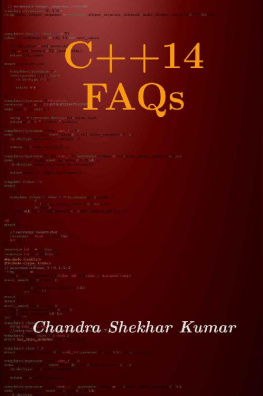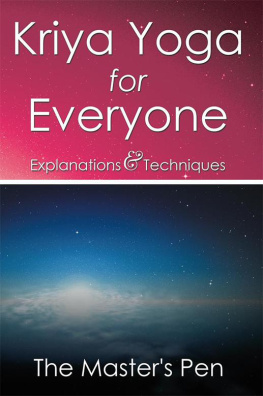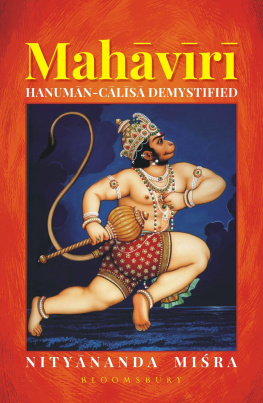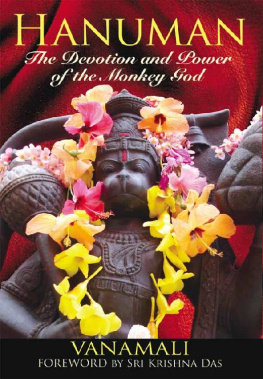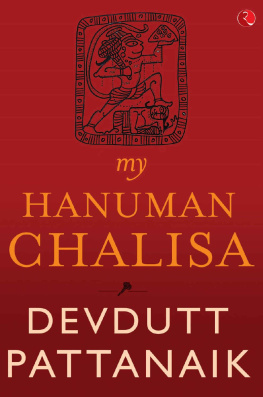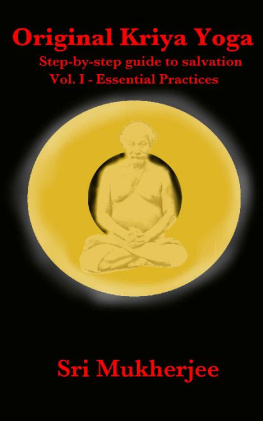Chandra Shekhar Kumar - Hanuman Chalisa Demystified: Ancient Kriya Yoga Tantric Scripture (Series of Commentaries as seen by The Divine Third Eye Book 1)
Here you can read online Chandra Shekhar Kumar - Hanuman Chalisa Demystified: Ancient Kriya Yoga Tantric Scripture (Series of Commentaries as seen by The Divine Third Eye Book 1) full text of the book (entire story) in english for free. Download pdf and epub, get meaning, cover and reviews about this ebook. year: 2017, publisher: Ancient Kriya Yoga Mission, genre: Religion. Description of the work, (preface) as well as reviews are available. Best literature library LitArk.com created for fans of good reading and offers a wide selection of genres:
Romance novel
Science fiction
Adventure
Detective
Science
History
Home and family
Prose
Art
Politics
Computer
Non-fiction
Religion
Business
Children
Humor
Choose a favorite category and find really read worthwhile books. Enjoy immersion in the world of imagination, feel the emotions of the characters or learn something new for yourself, make an fascinating discovery.

- Book:Hanuman Chalisa Demystified: Ancient Kriya Yoga Tantric Scripture (Series of Commentaries as seen by The Divine Third Eye Book 1)
- Author:
- Publisher:Ancient Kriya Yoga Mission
- Genre:
- Year:2017
- Rating:5 / 5
- Favourites:Add to favourites
- Your mark:
Hanuman Chalisa Demystified: Ancient Kriya Yoga Tantric Scripture (Series of Commentaries as seen by The Divine Third Eye Book 1): summary, description and annotation
We offer to read an annotation, description, summary or preface (depends on what the author of the book "Hanuman Chalisa Demystified: Ancient Kriya Yoga Tantric Scripture (Series of Commentaries as seen by The Divine Third Eye Book 1)" wrote himself). If you haven't found the necessary information about the book — write in the comments, we will try to find it.
This book is an outcome of inner revelations of mystical meanings of Hanuman Chalisa. Penning down itself was full of eternal vibrations which resembled as if being dictated by a Siddha. This journey was full of inexplicable ecstasy and joy, laced with complete surrendering to witnessing the state of Hanuman. It depicts transcendental qualities and attributes of this state in its totality.
This body is just an instrument of meditation and the individual is nothing, the individual have nothing.
Hanuman is a special state of Siddhas, the qualities of which are described by Hanuman Chalisa. A Sadhak passes through infinite number of states during his Sadhana. Period of stay in any state varies depending on the peculiarities of that state as well the predicament of the Sadhak. During this course, the outer symptoms may not be described and grasped as aptly as inner symptoms. Outer symptoms like trembling and/or levitation of body often lead to bewilderment and amusement of the beholder. Whereas being in the same state, it leads to calm acceptance and grasp of what is happening to someone else being in that state.
Hence irrespective of the peculiarities and idiosyncrasies associated with various paths, the Sadhak finds himself in a special state all of a sudden, often termed as being at one place in Siddha Loka. Gradually, he realizes that there are infinite such states, hence places in Siddha Loka, one of which is Hanuman. It becomes clear to him that practice (Sadhana) is gradual, but being in any such state is all of a sudden, involuntary ones during early stages of Sadhana.
There is no single prescribed path for Sadhana, simply because it varies from Sadhak to Sadhak, the root of which is often buried deep in ones Providence(Prarabdha). Hence no matter which path a Sadhak adopts for his journey to start with, he will get aligned to the best path, most suitable one for him, in due course of time, gradually. The single most important key is:
Continue seeking in with utmost Sincerity and Devotion.
Historians often attribute the composition of Hanuman Chalisa to Goswami Tulsi Das, whereas a Sadhak realizes, when time is ripe for him, that the particular Shabda is eternal, ever present, everywhere, perceptible to one only when one is ready during his course of Sadhana, including listening to these being chanted/sung by Siddhas, all the time, beyond the time.
This book is dedicated to all Sadhakas.
Chandra Shekhar Kumar: author's other books
Who wrote Hanuman Chalisa Demystified: Ancient Kriya Yoga Tantric Scripture (Series of Commentaries as seen by The Divine Third Eye Book 1)? Find out the surname, the name of the author of the book and a list of all author's works by series.

